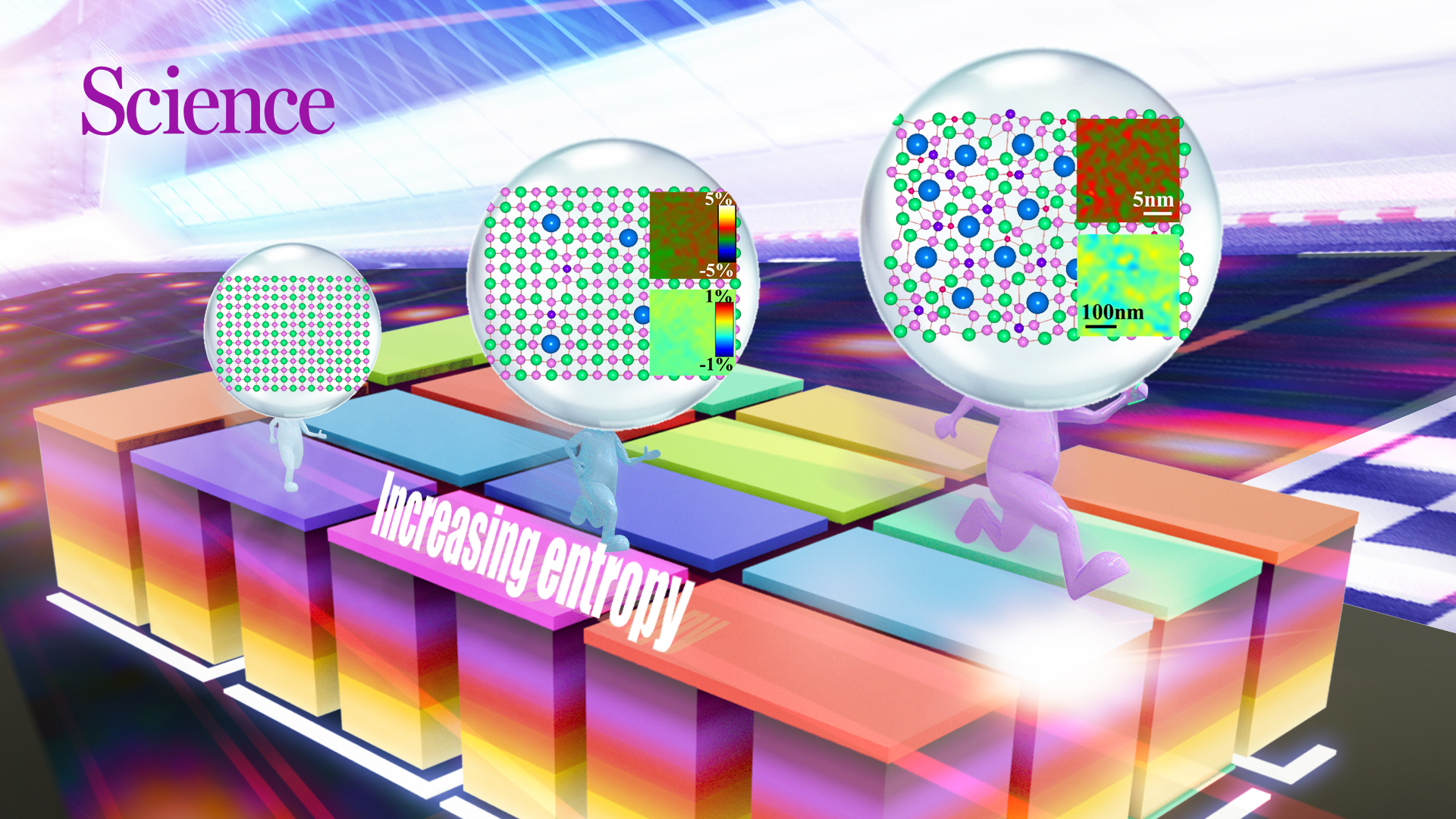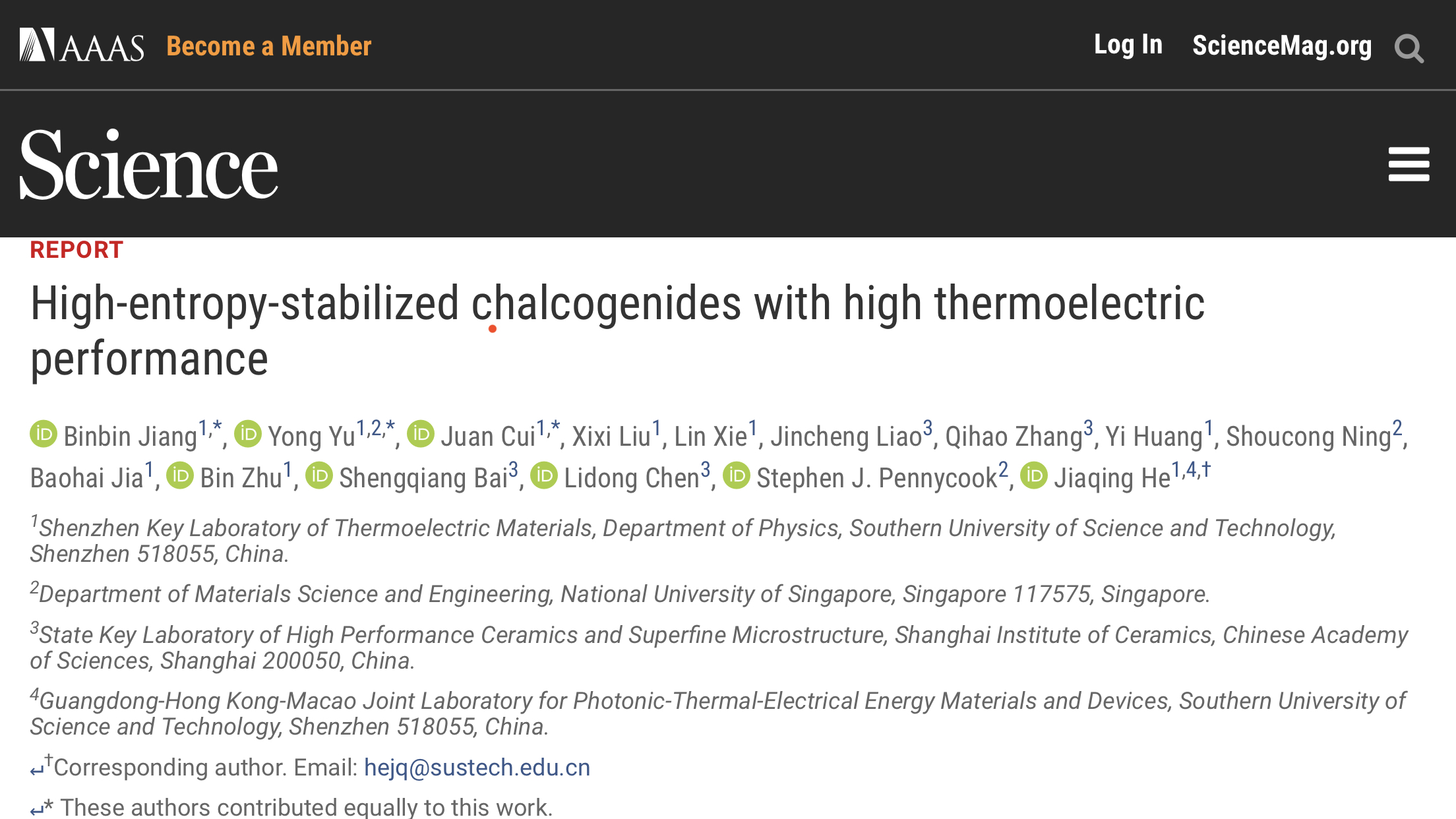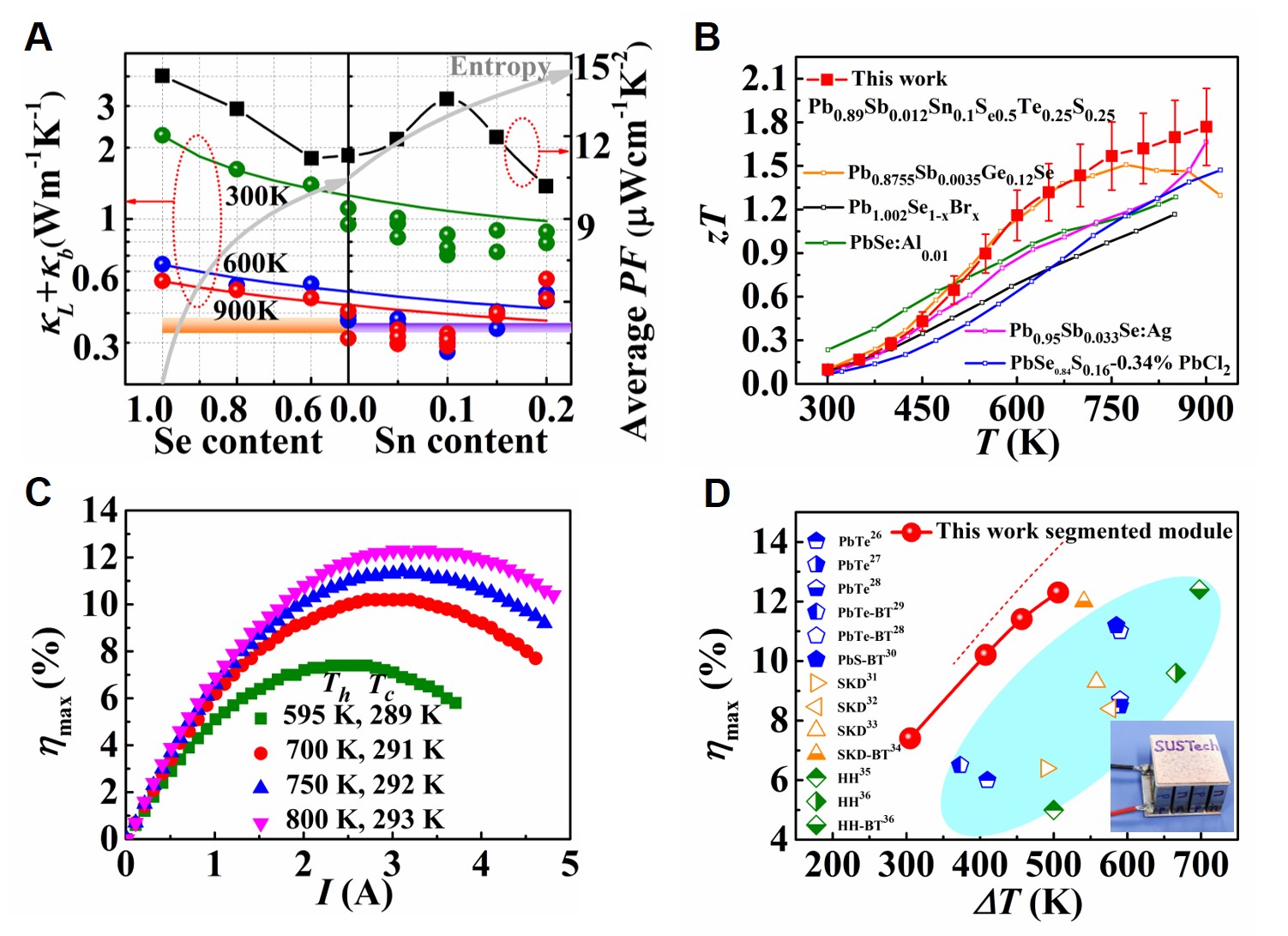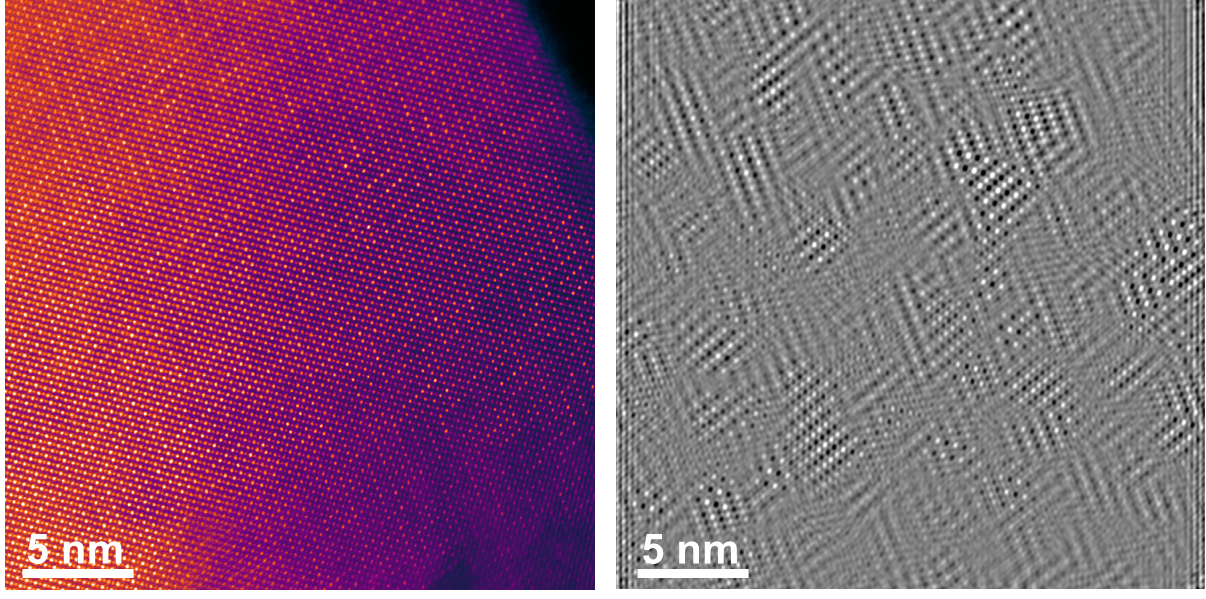Two Papers about Thermoelectric Materials at JQH Research Group Published in Science
Souqi LIAO 2021-02-19
In the past week, Chair Professor Jiaqing He’s research group from the Department of Physics at the Southern University of Science and Technology (SUSTech) has published their researches about thermoelectric materials in Science. These two papers were titled “High-entropy-stabilized chalcogenides with high thermoelectric performance” and “Enhanced atomic ordering leads to high thermoelectric performance in AgSbTe2”.
Conversion processes waste more than two-thirds of the energy in the world, which can be potentially collected by technology that captures waste heat. Thermoelectric technology is an attractive option because it can be easily adapted for many situations as a result of its small size and lack of rotating parts or gas emissions. One major obstacle to using thermoelectric technology for real applications is the low conversion efficiency. The efficiency is directly determined by the dimensionless figure of merit zT = S2σT/(ke kL) of thermoelectric materials, where S, σ, T, ke, and kL are the Seebeck coefficient, electrical conductivity, absolute temperature, carrier thermal conductivity, and lattice thermal conductivity, respectively. All of these parameters can be optimized by tuning band structures, microstructures, and bond states with a range of proposed strategies such as band convergence, resonant level, alloying, nanostructure, anharmonicity, and liquid-like ions. However, it is also imperative to propose a new strategy for optimizing thermoelectric performance.
In the first paper (High-entropy-stabilized chalcogenides with high thermoelectric performance), they developed a new n-type PbSe-based high-entropy material formed by entropy-driven structural stabilization and fabricated a high-efficiency thermoelectric module. Based on high-resolution transmission electron microscopy and theoretical analysis, this work presented the relationship between entropy, structure, and electrical-thermal transport properties, which will promote the application of the high-entropy concept on the thermoelectric community.
High-entropy alloy is typically defined as a solid solution with more than five principal elements, which has been extended into creating entropy-stabilized functional materials. For a given system, the configurational entropy will increase with increasing element species, leading to the decreased Gibbs free energy and stabilized crystal structure when the increase of entropy is larger than that of enthalpy. In general, the high-entropy concept should provide a good way to improve thermoelectric performance.


In this work, they found that the entropy-stabilized single-phase structure can be formed by increasing element species. The change of energy by entropy engineering manifests as the extended solubility limits of alloying elements or the entropy-driven structural stabilization effect, resulting in the new high-entropy thermoelectric system which can be formed based on traditional alloys concept. For PbSe-based materials, increasing the contents of S and Te at the Se site will result in spinodal-decomposition multiple phases. Further introducing Sn at the Pb site, the increase in entropy is faster than that of enthalpy, resulting in entropy-driven structural stabilization and the high-entropy range with a negative Gibbs free energy. The translation from the multiphase mixture to a single-phase through increasing entropy in the (Pb and Sn)(Se, S, and Te) system clearly shows that the entropy-driven structural stabilization effect can be an effective strategy for forming different high-entropy materials whose composition is over the solubility limit.
 Figure 1. Forming high-entropy thermoelectric materials by entropy-driven structural stabilization
Figure 1. Forming high-entropy thermoelectric materials by entropy-driven structural stabilization
The entropy-driven structural stabilization should maintain the high electrical transport properties by eliminating the scattering for electrons. Based on the observation of atomic position and lattice analysis, they found that high-entropy will induce strong lattice distortion. The lattice distortion caused unusual shear strains and showed complicated statistical and spatial distribution. The lattice strain from distortion will hinder the propagation of heat-carrying phonons, resulting in the ultralow lattice thermal conductivity. As a consequence, a high zT value (1.8 at 900 K, n-type) and conversion efficiency (12.3% at a temperature difference of 507 K) in the high-entropy material and module were realized in the experiments.
 Figure 2. Improving the performance of thermoelectric materials and modules through entropy engineering
Figure 2. Improving the performance of thermoelectric materials and modules through entropy engineering
Binbin Jiang, a postdoctoral fellow of the Department of Physics at SUSTech, is the first author. Yong Yu and Juan Cui, doctoral candidates in the Department of Physics, are the co-first authors of this paper. Jiaqing He, Chair Professor in the Department of Physics, is the corresponding author. Lidong Chen’s group in the Shanghai Institute of Ceramics, Chinese Academy of Sciences (SICCAS), and Stephen J. Pennycook’s group in the National University of Singapore (NUS) participated in the research.
In the second paper (Enhanced atomic ordering leads to high thermoelectric performance in AgSbTe2), Chair Professor Jiaqing He and Research Associate Professor Lin Xie participated in the research program lead by Professor Kanishka Biswas in Jawaharlal Nehru Center for Advanced Scientific Research (JNCASR) in India. In the research, they analyzed the microstructure on Cd-doped AgSbTe2. The zT values of AgSbTe2 can be enhanced by alloying Cd to 1.5 at room temperature and 2.6 at 573 K. We show that Cd doping in AgSbTe2 enhances cationic ordering, which simultaneously improves electronic properties by tuning disorder-induced localization of electronic states and reduces lattice thermal conductivity via spontaneous formation of nanoscale (~2-4 nm) superstructures and coupling of soft vibrations localized within ~1 nm around Cd sites with local strain modulation. The demonstrated strategy applies to most other thermoelectric materials that exhibit inherent atomic disorder.
 Figure 3. HRTEM figures of Cd-doped AgSbTe2 sample
Figure 3. HRTEM figures of Cd-doped AgSbTe2 sample
This research has been supported by the National Natural Science Foundation of China (NSFC), the leading talents of the Guangdong Province Program, the Guangdong-Hong Kong-Macao Joint Laboratory, the Science, Technology and Innovation Commission of Shenzhen Municipality, and a high level of special funds.
Paper links:
https://science.sciencemag.org/content/371/6531/830
http://dx.doi.org/10.1126/science.abb3517




